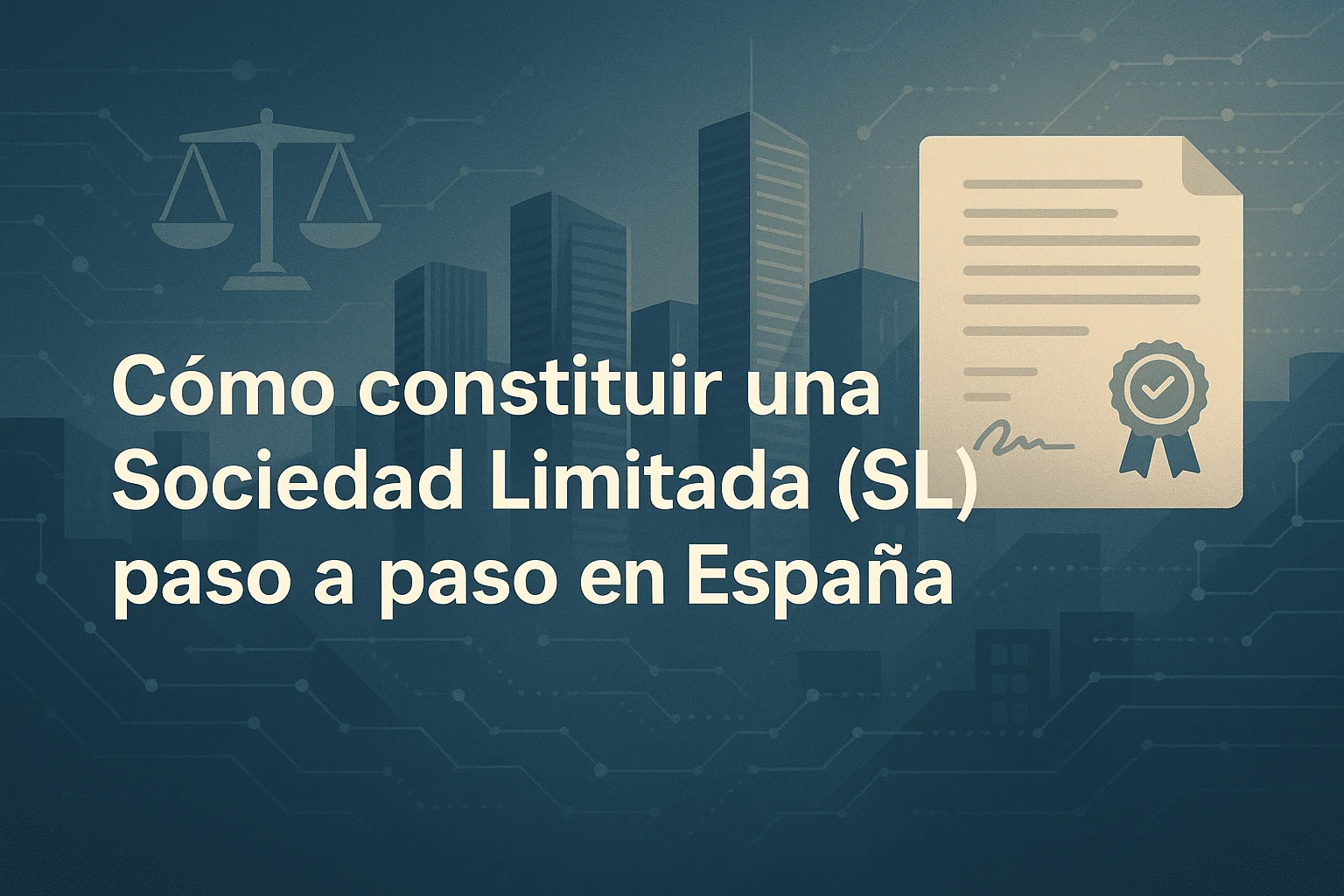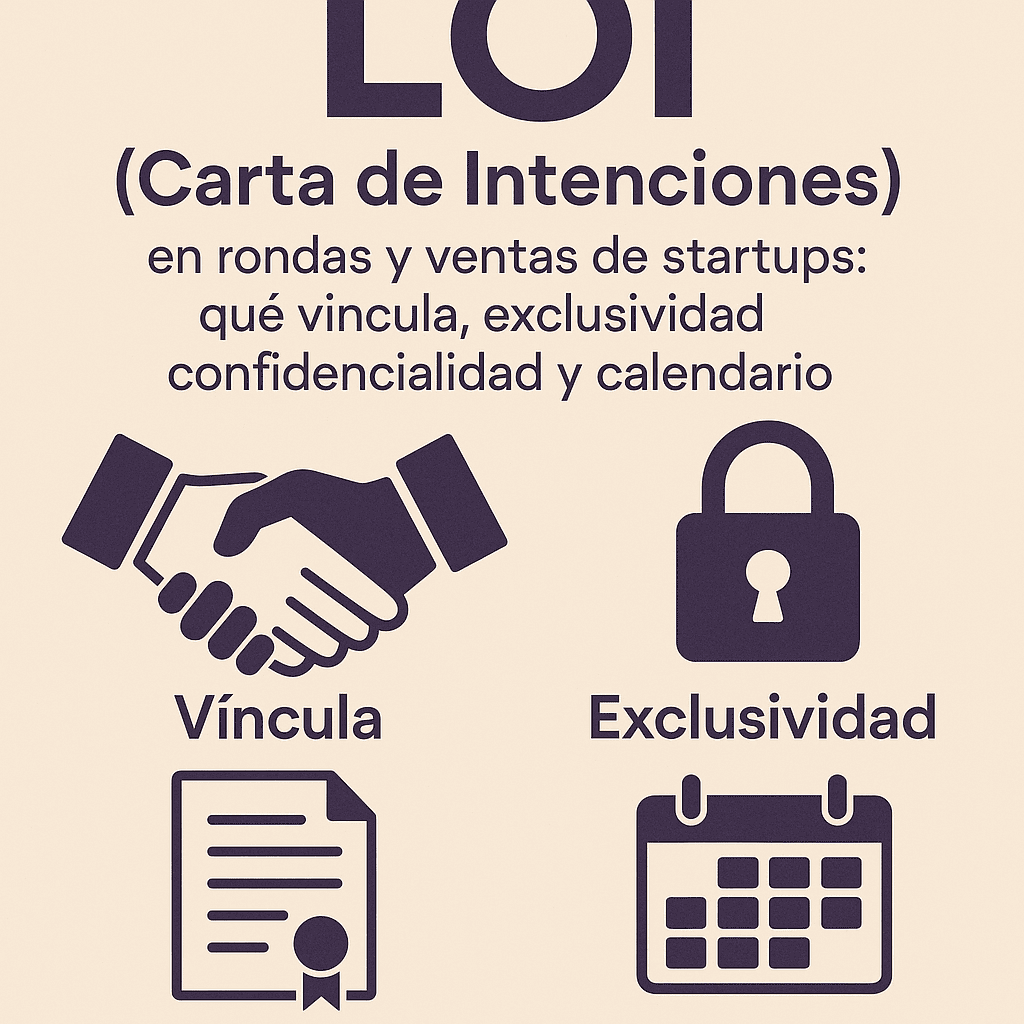Forming a Limited Liability Company (Sociedad Limitada, SL) is one of the most common legal structures for starting a business in Spain.
Its main advantage: it protects the entrepreneur’s personal assets and provides a flexible and scalable structure for safe growth.
This article walks you through the complete legal process to create an SL, step by step — from choosing the company name to obtaining the final tax ID (NIF).
A practical resource if you’re starting a business and want to do it right from day one.
---
1. Request the Negative Name Certificate
Before creating your company, you need a name that isn’t already in use.
To do so, you must request a negative name certificate from the Central Mercantile Register (Registro Mercantil Central, RMC).
- Provide up to 5 potential names in order of preference.
- The process can be done online on the RMC website.
- Once obtained, you have 3 months to formalize the company before a notary (extendable by another 3).
---
2. Open a Bank Account in the Company’s Name
With the certificate in hand, open a bank account in the name of the future company.
You must deposit the initial share capital, which must be at least €3,000, unless you opt for the symbolic capital option introduced by the Crea y Crece Act.
The bank will issue a certificate of deposit, a document required to appear before the notary.
If there are multiple shareholders, a certificate of each partner’s contribution must be issued.
---
3. Draft the Company Bylaws
The bylaws set out the internal rules governing your SL.
They must regulate issues such as:
- The corporate purpose (the activity the company will perform).
- The registered office and company duration.
- The share capital and its distribution.
- The management structure (sole, joint, or joint-and-several director).
- The distribution of profits and transfer of shares.
📌 This document is crucial. While you can draft it yourself, it’s advisable to have it prepared by a lawyer or the notary to avoid ambiguities or invalid clauses.
💡 Tip: don’t overcomplicate the bylaws. Some clauses may be incompatible with the Spanish Companies Act (Ley de Sociedades de Capital), preventing registration and forcing you to repeat the notarial process.
---
4. Sign the Public Deed of Incorporation
Once you have all the previous documentation, you must appear before a notary to sign the public deed of incorporation.
This is the formal act by which your company is legally created.
Required documentation:
- Negative name certificate.
- Bank certificate of capital deposit.
- Company bylaws.
- ID or NIE of the founding partners.
- Declaration of foreign investment (if applicable).
The notary will send the deed electronically to the provincial Mercantile Register, or you can submit it yourself.
📎 Note: if you make non-monetary contributions (e.g., software), a detailed description and valuation of the contribution may be required.
---
5. Request the Provisional NIF (Tax ID)
After signing the deed, you must go to the Spanish Tax Agency (Agencia Tributaria) to request the provisional NIF for your SL.
This is done using Form 036, which will also serve later for tax registration.
The provisional NIF allows you to operate temporarily while awaiting registration in the Mercantile Register.
---
6. Register the Company with the Tax Agency and Choose the IAE Code
Using Form 036, in addition to requesting the NIF, you’ll register your company with the Tax Agency and indicate your economic activity by selecting the appropriate IAE (Business Activities Tax) code.
Although SLs are exempt from paying IAE during the first year, it’s still mandatory to declare the correct code, as it determines future tax obligations.
---
7. Register Your Company in the Mercantile Register
Once the deed is signed, you have two months to register the company in the Mercantile Register of the province where the registered office is located.
This step is essential for the SL to acquire full legal personality.
After registration, you’ll receive a copy of the deed with registry certification, required to obtain the final NIF.
---
8. Request the Final NIF
Finally, once your company is registered, you must apply to the Tax Agency for the final NIF using Form 036.
This will be the permanent tax number used for all operations.
You can now issue invoices, sign contracts, open accounts, and conduct business.
Your company is officially established. 🎉
---
How Long Does It Take to Create an SL?
It depends on the method chosen: in person, traditional notary, or online system (CIRCE / PAE).
With good planning, you can have your SL operational in around one month.
---
What If I Want to Create an SL with Symbolic Capital?
Since Law 18/2022 of September 28 (Crea y Crece Act), it’s possible to form an SL with capital under €3,000, even as little as €1, under certain conditions.
This option requires:
- Creating a legal reserve until the €3,000 threshold is reached.
- Shareholders remain personally liable for the unpaid portion if the company becomes insolvent.
📌 It’s an attractive option to start with, but be aware it entails greater personal risk in case of debts or losses.
---
How Legal Core Labs Can Help
At Legal Core Labs, we help you create your SL securely, efficiently, and with a strong legal structure from day one.
Our services include:
- Professional drafting of bylaws.
- Coordination with notaries and the Mercantile Register.
- Tax registration and NIF management.
- Guidance on tax regimes and optimal company structures.
- Review of clauses, corporate bodies, and shareholder agreements.
💼 If you’re going to start a business, do it on a solid foundation.
We help you form your company without errors and with a long-term legal vision.



